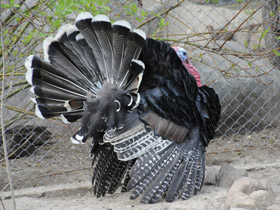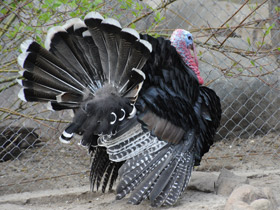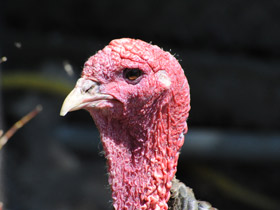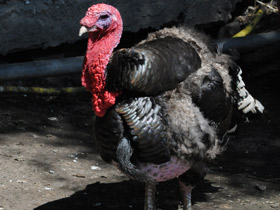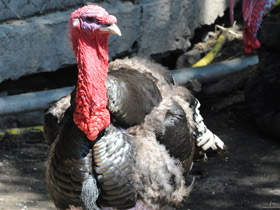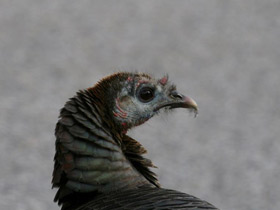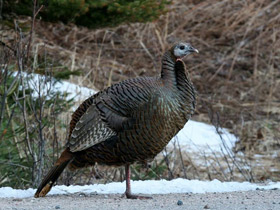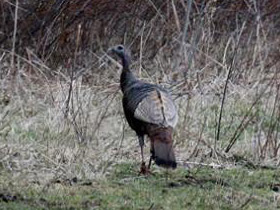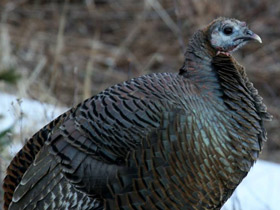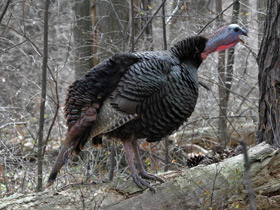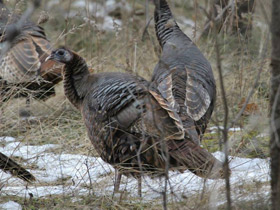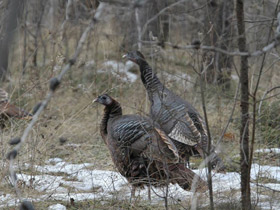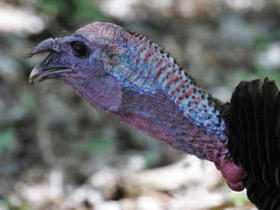The wild turkey Meleagris gallopavo
The wild turkey was once domesticated, but it is still widely distributed in North America where these birds live in most diverse habitats, from rain forests to forest-steppes. The head and upper neck of the wild turkey are naked; the wild turkey has a caruncle – a wart-like projection of skin attached to the upper part of the forehead. The wild turkey is the largest representative of the order of Galiformes: males reach the length of 110 cm and weigh up to 10 kg, while females are smaller and slimmer; they weigh almost two times less than males and have duller plumage. Wild turkeys are very fast runners, though they are also able to fly; adult male can fly a distance of one mile or even more. A startled wild turkey usually runs at the beginning and then takes flight to escape. These birds can fly almost vertically and reach the top of a tall tree in a few seconds, sometimes flying at a speed of 55 miles per hour. Wild turkeys fly faster and more skilfully than quails, pheasants, and many of the ducks. The wild turkey is unique in that it is one of the very few large birds that can pick up a high speed from the start; they are able to do so due to the shape of their wings and powerful wing muscles that permit rapid acceleration.
Wild turkeys are mostly diurnal. They roost on tree branches during nighttimes, sometimes sitting quite high on the tree. Outside of the breeding season, these birds live in large flocks comprising several family groups. A large adult male usually heads the flock. Wild turkeys consume a great variety of foods including seeds, corns, chestnuts, acorns, fruit, berries, bulbs, and tree leaves; however, they prefer deciduous trees. Large individuals may occasionally eat lizards. Wild turkeys mostly forage on the ground.
In the early spring, male wild turkeys begin compete for females, demonstrating courtship behaviour. Every winner attracts several females, which form a harem, but males do not participate in parental care of the chicks. Females are nesting on the ground. Female turkey lays 8 to 15 eggs and incubates them for about 4 weeks. The chicks are precocial and begin catching insects shortly after birth. The wild turkey has been the main hunted bird in America, and by the 40-ies of the 20th century, the populations of the wild turkey had been wiped out by hunting, with only 300 thousand birds remaining in their woodland habitats. Wild turkey reintroduction programs began in the 1940s, and the birds were relocated to areas where populations had been decimated but woodlands were recovering. Such efforts worked well, and the world population of the wild turkey now comprises 3.5 million birds.

















